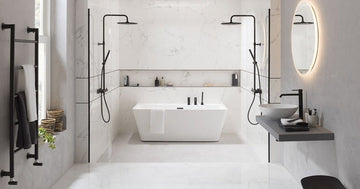In recent years, smart bathroom devices have become a staple in modern homes, promising convenience and enhanced functionality. However, like any technology, they are not immune to issues. For those in Industry QA, understanding how to troubleshoot these devices effectively is crucial. This article delves into the nuances of diagnosing and resolving common problems associated with smart bathroom technologies.

Understanding the Basics of Smart Bathroom Devices
Before diving into troubleshooting, its essential to grasp the fundamental components of smart bathroom devices. These devices often include sensors, digital interfaces, and connectivity features that integrate with other smart home systems. From smart mirrors to automated shower systems, the technology is vast and varied.
For an overview of how these devices can revolutionize your bathroom experience, check out this smart bathroom technology article.
Common Issues with Smart Bathroom Devices
Despite their advanced features, smart bathroom devices can face numerous challenges. Connectivity issues, software glitches, and hardware malfunctions are some of the most common problems users encounter. Understanding these issues is the first step in effective troubleshooting.
For instance, a common problem is the failure of smart mirrors to connect with other devices. Often, this is due to network issues or outdated software. To learn more about how connectivity plays a role in bathroom technology, read this article on Bluetooth speakers for bathroom.
Steps for Troubleshooting Smart Bathroom Devices
1. Check Connectivity
One of the first steps in troubleshooting is to ensure that all devices are properly connected. This includes verifying Wi-Fi settings, ensuring Bluetooth is enabled, and checking for any network disruptions. For more detailed guidance, visit this humidity sensors guide.
2. Update Software
Software updates often come with crucial bug fixes and improvements. Regularly updating the devices firmware can resolve many underlying issues. Ensure that the device is set to automatically update or check for updates manually.
3. Reset the Device
Sometimes, a simple reset can resolve myriad issues. This can be done by following the manufacturer's instructions for a complete reset, which often involves pressing a specific button combination.
4. Consult the Manual or Online Resources
Manufacturers often provide detailed troubleshooting steps in their manuals. Additionally, online resources and forums can offer solutions from other users who faced similar issues.
Advanced Troubleshooting Techniques
For those in Industry QA, advanced troubleshooting techniques may be necessary. This includes using diagnostic tools to assess the hardware and software performance of the device. Such tools can provide insights into issues that are not immediately apparent through basic troubleshooting methods.
Preventive Measures
Prevention is better than cure. Regular maintenance and careful usage can prevent many common issues. This includes keeping software updated, regular cleaning of hardware components, and ensuring that devices are not exposed to conditions they are not designed to handle.
For design ideas that incorporate smart technology into your bathroom, explore these modern bathroom designs.
Conclusion
As smart bathroom devices continue to evolve, so does the need for effective troubleshooting methods. By understanding the common issues and knowing how to address them, those in Industry QA can ensure that these devices function optimally, providing users with a seamless experience.
For more insights on the future of smart bathroom technology, you might find this case study on bathrooms of the future enlightening.

Frequently Asked Questions
1. What are common connectivity issues with smart bathroom devices?
Common connectivity issues include Wi-Fi disruptions, Bluetooth pairing problems, and network configuration errors. Ensuring proper network settings and regular software updates can mitigate these problems.
2. How often should I update the software of my smart bathroom devices?
It is advisable to update the software whenever a new update is available. Automatic updates are ideal, but manual checks should be performed regularly to ensure the device runs the latest version.
3. What should I do if my smart bathroom device does not respond?
Start by checking the power supply and connectivity. If the issue persists, try resetting the device or consult the user manual for troubleshooting steps specific to your device model.






